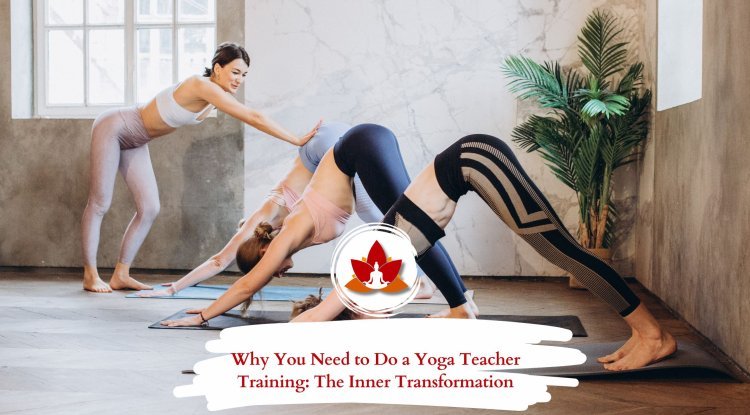Yoga Sutra 1.12: Abhyasa Vairagya Abhyam Tan Nirodhah

The Sutra that Holds the Secret of Yoga
Every meaningful journey requires both movement and stillness. Like a tree that stands tall by rooting deeply into the earth while letting go of its leaves, we too are called to balance holding on and letting go. On the yogic path, every seeker learns the art of harmonizing effort with surrender.
Yoga Sutra 1.12—Abhyāsa-Vairāgya-Ābhyāṁ Tan-Nirodhaḥ—captures this wisdom beautifully. Patanjali teaches that the restless fluctuations of the mind (citta vṛttis) cannot be silenced through force or denial. Instead, they gradually soften through steady, dedicated practice (abhyāsa) and a gentle attitude of non-attachment (vairāgya).
This teaching isn’t just philosophy—it’s a practical guide for daily life. Yoga is not about sudden flashes of enlightenment. It’s about showing up consistently, releasing what we cannot control, and uncovering the quiet peace that already exists beneath life’s endless noise. ????
Translation and Meaning
Translation and Meaning
Sanskrit: अभ्यासवैराग्याभ्यां तन्निरोधः॥१.१२॥
Transliteration: Abhyasa Vairagya Abhyam Tan Nirodhah
-
Abhyasa → sustained practice, consistent effort
-
Vairagya → non-attachment, freedom from clinging
-
Abhyam → by both, together
-
Tan → of those mental fluctuations
-
Nirodhah → restraint, quieting
Translation: “Through practice and non-attachment together, the fluctuations of the mind are stilled.”
Ancient Commentary
The earliest commentator on the Yoga Sutras, Vyasa, emphasizes that both abhyasa and vairagya are essential. One cannot exist meaningfully without the other:
-
Without non-attachment, practice risks turning into obsession.
-
Without steady practice, detachment can slide into passivity.
Vyasa defines vairagya as mastery over desire and abhyasa as the effort to cultivate stability. When these two forces work together, they create balance, open the doorway to inner freedom, and gently quiet the restless movements of the mind.
Modern Perspectives
Modern Perspectives
Swami Vivekananda
For Swami Vivekananda, abhyāsa is “a continuous struggle to keep the mind steady,” while vairāgya is the strength to resist the pull of fleeting pleasures.
Teachers of Yoga Today
Modern yoga teachers remind us that abhyāsa is not about perfection but about consistently showing up. Vairāgya is not about indifference but about softening the ego’s grip and learning to let go with grace.
Mindfulness & Psychology
What Patanjali intuited centuries ago—that mental clarity requires loosening our attachment to passing thoughts and outcomes—is now confirmed by modern psychology and mindfulness research.
Understanding Abhyāsa: The Power of Steady Practice
In the very next sutra (1.13), Patanjali explains abhyāsa as:
“Tatra sthitau yatno bhyasah” — Practice is the effort to remain steadily established in one focus.
This isn’t just about discipline; it’s about continuity. Like water droplets carving stone over time, steady effort reshapes the mind more effectively than occasional bursts of intensity.
Aspects of Abhyāsa
-
Regularity: Small, daily practices are more powerful than rare, intense efforts.
-
Devotion: Engagement from the heart, not mechanical repetition.
-
Patience: True transformation unfolds slowly and gently.
Practical Expressions of Abhyāsa
-
In meditation, returning to the breath each time the mind wanders.
-
On the mat, focusing on the experience of an asana rather than chasing the “perfect” pose.
-
During the day, pausing to notice thoughts instead of being carried away by them.
-
In life, honoring small rituals—lighting a lamp, chanting, or sitting in silence—consistently over the years.
Through abhyasa, we cultivate inner strength and resilience—the quiet power to return, again and again, to the present moment.
Understanding Vairāgya: The Freedom of Non-Attachment
The word vairagya comes from vi (without) + raga (color, passion, attachment). At its essence, it means “uncolored”—perceiving reality as it truly is, free from the distortions of craving or aversion.
The Stages of Vairāgya
-
Yatamana – making conscious efforts to resist desires.
-
Vyatireka – beginning to choose detachment with success.
-
Ekendriya – mastering control over one particular sense or desire.
-
Vasikara – complete mastery, where cravings no longer disturb the mind.
What Vairagya is Not
-
It is not suppression or forced denial.
-
It is not indifference to life or relationships.
-
It is not cold detachment.
Instead, vairagya means engaging fully in life—loving, working, and living wholeheartedly—while remembering that no external thing defines your worth.
Vairagya in Everyday Life
-
Celebrating success without clinging to it.
-
Loving deeply without the fear of losing.
-
Eating with gratitude, not compulsion.
-
Using technology mindfully, without falling into addiction.
As the Bhagavad Gita reminds us: “Perform your duty, but do not be attached to the fruits of action.”
Vairagya is not about turning away from life—it’s about moving through it with freedom, clarity, and an open heart.
Abhyasa and Vairagya: The Two Wings of Freedom
Imagine abhyasa and vairagya as the two wings of a bird.
-
Abhyasa anchors us in discipline, presence, and steady practice.
-
Vairagya frees us from the ego’s grip on results and possessions.
Together, they create balance: effort without obsession, surrender without apathy. Without abhyasa, vairagya risks sliding into laziness. Without vairagya, abhyasa can harden into rigidity. The true art of yoga lies in carrying both—steady effort alongside gentle release.
Benefits of Practicing This Sutra
-
Inner Peace: When cravings lose their power, the mind rests in serenity.
-
Emotional Resilience: You respond instead of react.
-
Focus and Concentration: Mental energy is channeled with clarity instead of scattered.
-
Authenticity: Actions flow from inner truth, not social conditioning.
-
Deeper Relationships: Freedom from ego makes space for unconditional love.
-
Spiritual Growth: A calm mind allows the Self to shine through.
Living Sutra 1.12 on the Mat
At Rishikesh Yogkulam—the premier yoga school in Rishikesh—these teachings aren’t just studied, they are lived. Every class integrates the essence of abhyāsa and vairāgya:
-
Establish Presence: Begin with stillness, a moment of meditation.
-
Move with Awareness: Perform asanas with focus, not competition.
-
Observe Attachment: Notice when you chase the “perfect” pose—and gently let it go.
-
Rest in Savasana: Allow the fruits of practice to unfold naturally, without expectation.
In this way, each practice becomes more than movement—it becomes a living expression of Yoga Sutra 1.12.
Applying Sutra 1.12 to Everyday Life
The wisdom of Yoga Sutra 1.12 extends far beyond the mat. Its essence can be woven into daily life through small, mindful practices:
-
Pause and Breathe: Take a conscious breath before reacting.
-
Journal with Lightness: Write down thoughts as passing clouds, not fixed truths.
-
Practice Gratitude: Appreciate both the small and big blessings of life.
-
Digital Vairagya: Step away from screens and give your mind a break.
-
Mindful Work: Offer full attention to tasks without attachment to results.
These micro-practices gently anchor the spirit of abhyasa (steady effort) and vairagya (letting go) into your everyday rhythm.
Practical Insights of Sutra 1.12
-
A student chasing the perfect handstand discovers balance only after releasing the need to “achieve.”
-
A meditator battling restless thoughts learns that practice is not about suppressing them, but about returning again and again with patience.
-
A professional finds freedom not in promotion, but in letting go of being defined by it.
Such experiences remind us that Sutra 1.12 is not abstract philosophy—it is alive in every moment.
A Way Toward Liberation
Ultimately, Yoga Sutra 1.12 guides us toward kaivalya—true freedom. Through discipline and surrender, the Self shines forth. This sutra reassures us: you don’t need to escape the world to find peace—you need only steady practice and the courage to let go.
Conclusion
When abhyāsa and vairāgya unite, they create the alchemy of yoga. Like inhalation and exhalation, they sustain the rhythm of transformation. With consistent effort and gentle release, we uncover what has always been present beneath the noise—our timeless true nature.
Yoga Sutra 1.12 is an invitation to balance discipline with freedom, presence with surrender. Step onto the mat—and into life—with both strength and softness.
As you practice, remember: show up, let go, and the stillness will reveal itself.
What's Your Reaction?


























